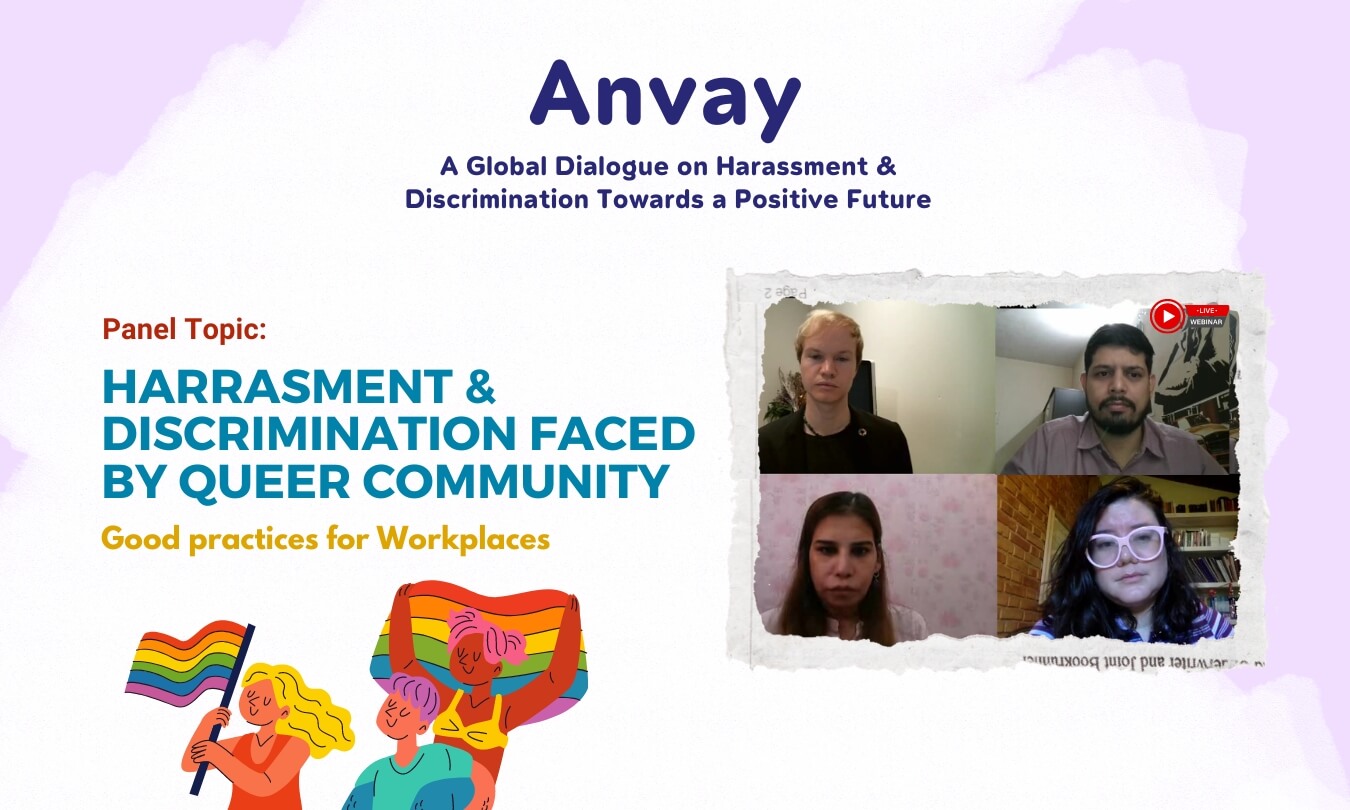At Anvay, 2023, one of the key panel discussions on “Harassment and Discrimination faced by Queer Community – Good practices for Workplaces,” featured insightful contributions from:
- Luiza Drummond Veado, Human Rights and Gender Specialist, SOGIESC Expert, New York, United States.
- Scott Sallee, Social Impact & Sustainability at Dentsu UK, Co-Chair: Wellbeing, Steerco: LGBTQ+, Neurodivergent.
- Zainab Patel, Inclusion Catalyst, Lead Inclusion & Diversity, Pernod Ricard India.
- Aakash Sane, Senior Manager Human Resources, Ascend International School, Mumbai.
The queer community faces significant challenges in various aspects of life, particularly in the workplace. These issues stem from systemic discrimination and a lack of understanding that permeates society. This blog explores the levels of discrimination, the importance of inclusion, best practices for workplaces, and the unique challenges faced by transgender individuals.
Levels of Discrimination
- Cradle to Grave Issues: Discrimination against queer individuals begins early, affecting access to education and safe spaces before they even enter the workforce.
- Workplace Exclusion: Many queer individuals find themselves in informal work settings or formal workplaces that lack inclusive policies and representation in leadership roles.
- Going Back in the Closet: The fear of discrimination often forces queer employees to hide their identities, leading to decreased job performance due to the energy spent conforming rather than being authentic.
Challenges for Transgender Individuals
- Social Exclusion: Transgender people often face discrimination not just in the workplace but also within their families and communities, leading to high rates of violence and exclusion.
- Legal Recognition Issues: In many regions, local laws do not adequately recognize transgender identities, complicating their access to rights and protections.
- Reverse Stereotyping: High expectations placed on skilled transgender individuals can create pressure, leading to a narrow representation of what it means to be trans person.
Importance of Inclusion
- Economic Impact: Companies that fail to include LGBTQ+ individuals may miss out on profitability; studies show that inclusive environments lead to higher employee satisfaction and productivity.
- Legal Framework: In countries where same-sex relationships are criminalized, even well-intentioned companies struggle to create a safe environment for queer employees. Legal recognition of gender identity is crucial for fostering inclusivity.
Best Practices for Workplaces
- Engage with LGBTQ+ Employees: Organizations should actively listen to their LGBTQ+ employees to understand their unique needs and concerns.
- Community Outreach: Collaborating with local LGBTQ+ organizations can provide valuable insights into community issues and help tailor workplace policies accordingly.
- Bias Training: Implementing training programs focused on biases and terminology can help foster a more inclusive workplace culture.
- Create Ally Groups: Forming internal groups of allies can promote solidarity and support for queer employees.
- Adopt an Intersectional Approach: Recognizing that queer individuals have diverse identities beyond their sexual orientation is essential for creating truly inclusive environments.
Addressing harassment and discrimination faced by the queer community in workplaces is not merely a matter of policy; it is a fundamental aspect of fostering an inclusive and thriving work environment.
Creating an inclusive workplace is an ongoing journey that requires commitment from all levels of an organization. It involves continuous education, open dialogue, and a willingness to adapt policies based on feedback from LGBTQ+ communities. By fostering understanding and implementing best practices, workplaces can become safe havens for all employees, regardless of their sexual orientation or gender identity.
In conclusion, addressing harassment and discrimination faced by the queer community is not just a moral imperative but also a business necessity. By prioritizing inclusion and understanding, organizations can unlock the full potential of their diverse workforce while contributing positively to society as a whole.
Authored by Gomathi Sridevi Radhakrishnan, Content Writer Intern, The Legal Swan.


